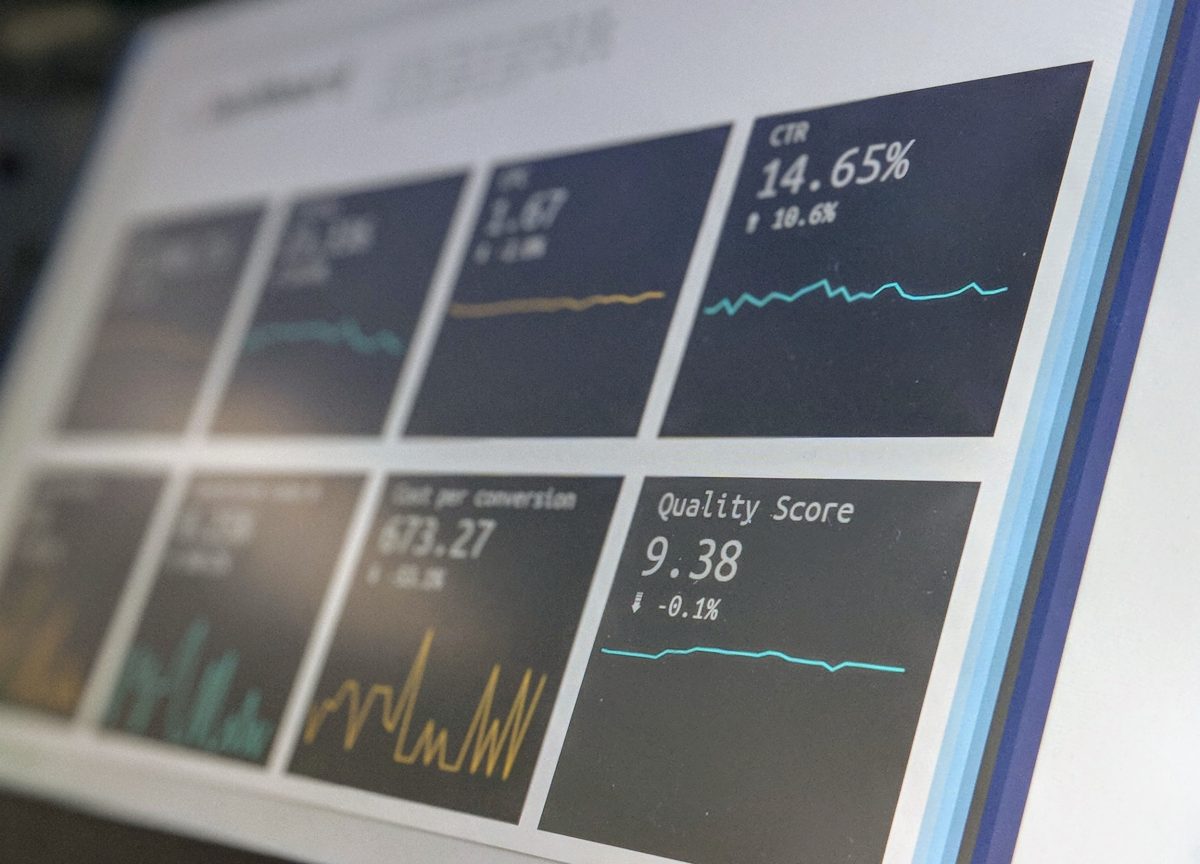
25 Social Media Key Figures You Must Know
Measuring your success is key in Social Media Marketing – but what should you be measuring in order to advance yourself and your company? This is where Key Figures (KFs) and Key Performance Indicators (KPIs) come into play.
In this blog post, we will show you the difference between metrics and KPIs, and showcase which ones are especially significant. This way, you’ll know exactly what to keep an eye on in social media analysis.
What are Key Figures and KPIs?
Often, key figures and KPIs are used synonymously. However, when taking a closer look, they can be clearly distinguished from one another:
- Key Figures: A key figure is simply a gaugeable number, for instance, Reach.
- Key Performance Indicators: If you combine a KF with a concrete goal, it becomes a KPI, e.g. reach increase.
Consequently, KFs and metrics are more or less the basis of KPIs.
What is the difference between Vanity Metrics and Actionable Metrics
Apart from KFs and KPIs, the differentiation between Vanity Metrics and Actionable Metrics is hugely relevant as well. It was first defined by entrepreneur and creator of the Lean Startup method, Eric Ries.
- Vanity Metrics: With vanity being the name of the game, Vanity Metrics are KFs that make us feel proud of our supposed accomplishments without actually saying much. A great number of Fans and Followers may make us feel good, but they by no means guarantee economic success.
- Actionable Metrics: A popular example of Actionable Metrics are so-called Split-Tests, where you present a target group with various forms of the same ad. According to Ries, specific, repeatable operations must elicit observable results in order to qualify as Actionable Metrics.
Vanity Metrics are often disqualified as useless, and Actionable Metrics praised as the only relevant KFs. Actually, it’s not quite so easy to make this distinction. After all, in most cases, it makes indeed sense to gather a large Follower base. However, exactly which benefits come with this growth can only be measured by looking at additional KFs.
You’re new to Social Media Monitoring? Download our “Beginner’s Guide to Social Media Monitoring” for free now and learn how to successfully generate leads, improve your customer service, and gain competitive advantage.
First define goals, then gauge your performance
Before deciding which KFs you want to have an eye on, you should ask yourself which goals you want to accomplish: Do you primarily want to increase your reach and brand awareness, foster interaction, or generate leads? The answers to these questions will tell you exactly which KFs and KPIs you should pay attention to right now.

Additionally, it is helpful to allocate KFs to specific stages of the Customer Journey and consider a Social Media Funnel. We have decided on three stages for our list:
- Awareness: At this stage, you focus on popularizing your brand and boosting your image.
- Engagement: These KFs indicate how well you manage to engage your Fans or Followers to interact with you.
- Action/Conversion: Nudging people towards action, such as subscribing to a newsletter or clicking on a link, is among the most important objectives in Social Media Marketing.
In addition, it’s useful to keep an eye on internal aspects too, i.e. your team’s output. The corresponding KFs are frequently being neglected, even though they play a key role in determining the status quo.
Knowing what your competitors are up to is part of Social Media Monitoring. In our blog post “Analyze Your Competitors on Social Media with the Right Strategies and Tools” you will find information on the advantages of systematic Competitive Intelligence and tips on which tools to use for it.
Essential Key Figures for Social Media
Output Metrics for Social Media
Post Rate:
How many Social Media Posts does your team publish on a given channel, such as Facebook, Twitter, or Instagram, over a certain period of time?
Post Format Mix:
What is the overall percentage of posts per format (video, text, pictures, etc.)?
Post Topic Mix:
What about the percentage of posts per topic (special offers, blog posts, etc.)?
Budget:
How much does your team spend on Social Media Marketing over a given period of time?
Awareness Metrics for Social Media
Follower and Fans:
The total number of Fans or Followers per Social Media Channel. It can usually be obtained easily but is meaningful only to a certain extent.
Post Reach:
It is important to know how many users have seen a post. In order to have even more meaningful results, differentiate between organic (unpaid), paid and viral reach.
Potential Reach:
In contrast with the actual reach, this figure indicates the number of people who could potentially have seen your blog post. Take into account that for every one of your Followers who share one of your posts with their network, two to five percent of their followers count towards your Potential Reach. In other words, the Potential Reach equates to two to five percent of the theoretical reach.
Video Views:
Videos keep on getting ever more relevant in Social Media Marketing. You can easily find out how many views one of your clips on say, YouTube, generates. However, with Video Views the aforementioned point also holds true: the number of views in itself is not particularly meaningful.
Mentions (Share of Voice):
The so-called Social Share of Voice indicates how many people mention your brand or company instead of your competition’s. This KF is very telling in terms of your visibility. With the right tool, it is easy to track mentions across various networks and obtain the Social Share of Voice.
Share of Audience:
How many people see your content in comparison to your competitors’ content?
Sentiment:
When a brand is mentioned, it is not always in a positive light. The KF Sentiment allows you to know whether a mention has a positive, negative, or neutral overtone, thereby letting you gauge the overall sentiment of posts related to your brand.
Engagement Metrics for Social Media
Amplification Rate:
The Amplification Rate measures the average number of shares per post. On Twitter, this is counted in Retweets, on Pinterest it is counted in Repins.
Virality Rate:
The Virality Rate is similar to the Amplification Rate, but it represents the number of users who have shared your post divided by the number of impressions.
Applause Rate:
With this figure, too, what you expect is what you get. The Applause Rate shows you how many people “applaud” your posts, i.e. react positively to them. The most notorious example of applause is Likes. However, keep in mind that the sheer number of likes doesn’t say much or rather anything at all about the Likers’ intentions.
Conversation Rate:
The Conversion Rate does not indicate the number of Likes, but the average number of conversations per post, meaning either answers or comments.
Engagement-Rate:
In order to measure the entire interaction with a given post in percent, you can use the following formula:
Likes + Comments + Shares / Reach x 100 = Engagement
The Engagement Rate is extremely helpful in determining which content works best with your audience. Additionally, you have the option to measure the Engagement Rate for your entire content over a defined time span.
When measuring the Engagement Rate, consider the individuality of each platform. On Facebook and Twitter, the Engagement Rate is generally lower than on Instagram.
Action/Conversion Metrics for Social Media
Click-Through Rate:
This figure is relevant for posts with links. Here, the number of clicks on a link is being divided by the number of impressions.
Conversion Rate:
The number of conversions over a certain time span as such is an important figure, too. However, in contrast to that, the Conversion Rate goes one step further. It divides the number of conversions by the overall traffic in a specific time span. Conversions can be a variety of processes: registrations, downloads, newsletter subscriptions, etc. A high Conversion Rate is a key indicator for successful content.
Leads:
How many leads has your team acquired through Social Media Marketing?
New Visitor Conversions:
When taking a look at your conversions, you should ask yourself who the number refers to. How many of these users are new visitors who haven’t visited your page before?
Return Visitor Conversions:
How many conversions refer to users who are return visitors and have been to your page before?
Social Media Conversion Rate:
In Social Media Marketing it is useful to know the number of conversions generated due to your Social Media activity. Divide this number by all conversions – the result is the Social Media Conversion Rate.
ROI:
The final outcome is important not just in its own right, but especially in relation to the effort that was made to achieve it. The Social Media ROI can be determined with the following formula:
Profit / Investment x 100 = Social Media ROI
The crux with this calculation lies in the fact that Social Media activities are not always easy to measure. It is all about what you want to achieve, and what this achievement is worth to you and your company.
Customer Lifetime Value:
What is the estimated value of a client across the entire time that they are your customer? This figure is based on prognoses, e.g. on the profits a client will generate for the company in the future.
Turnover / Churn Rate:
Not just the number of clients won, but also the number of clients lost over a specific period of time is a meaningful figure, which is known as the Turnover or Churn Rate.
Which KFs and KPIs you should consider depends on your company
In this blog post we have set out to show the plethora of Key Figures relevant in Social Media Marketing. However, not all of these will play a central role in your company.
On the contrary – the selection of Key Figures and Key Performance Indicators is dependent on your individual goals and strategies. It is therefore essential to consider beforehand which numbers you want to measure, why, and the results’ significance to you. This is the only way of successfully embedding your analyses into your global strategy.
For successful Social Media Monitoring you need the right tools. With Swat.io, you are always up to date on what Social Media users say about your brand, products, competitors and other relevant topics across all channels. In addition, you profit from a variety of valuable features for content creation, community management, and customer service. Start a free trial now!
 Published: 15. January 2020
Published: 15. January 2020  Updated: 05. January 2023
Updated: 05. January 2023 








